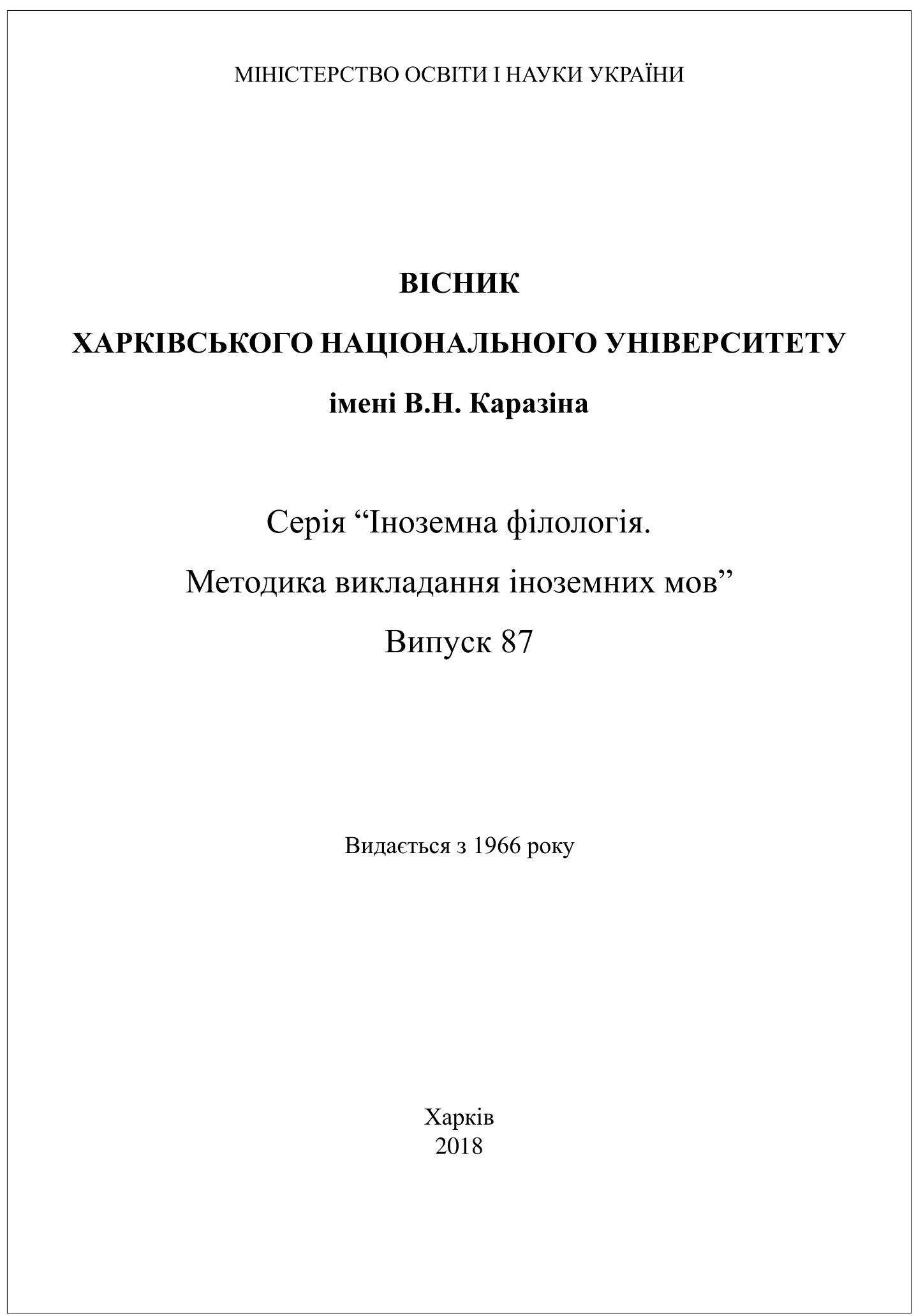Multiple actualization of meaning in English and German advertising texts
Abstract
The article establishes the features of multiple actualization of meaning in modern English and German texts of printed consumer advertising taking into account verbal and non-verbal components in terms of polycode and cognitive-pragmatic approaches. Multiple actualization of words and phraseological units in English and German advertising texts occurs either solely on the basis of verbal components or involves non-verbal components. The former case refers to a language game device based on polysemy, homonymy or paronymy – a pun, which also comprises anthanaclasis – repetition of words in different meanings. The pun is more frequent in German advertising texts, which is explained by the greater importance of the verbal component as compared to the English ones. The latter case describes a visual metaphor. Both direct and figurative meaning of the lexical/phraseological unit can be subject to visualization. When the direct, literal meaning is visualized, in the verbal component words are used in a figurative meaning, and in the image the meaning is literalized according to one of four varieties: 1) visualization of the entire explicit proposition; 2) visualization of the proposition with the addition of an implicit actant; 3) visualization of the subject actant of the sentence and 4) visual interpretation of the internal form. Visualization of the figurative meaning suggests that the direct meaning of the word is actualized through the verbal component, and the figurative meaning is reflected in the image. Multiple actualization of meaning is not affected by the occurring phenomenon – homonymy, polysemy or paronymy.
Downloads
References
Balli, Sh. (1955). Obshhaja lingvistika i voprosy francuzskogo jazyka [General linguistics and issues of French language]. Moscow: Izd. inostr. lit. Publ.
Barkova, L.A. (1983). Pragmaticheskij aspekt ispol'zovanija frazeologizmov v reklamnyh tekstah. Avtoref. diss. kand. filol. nauk [Pragmatic aspect of the use of phraseological units in advertising texts. Cand. philol. sci. diss. synopsis]. Moscow. 24 p. (in Russian).
Bezugla, L.R., and Romanchenko, І.O. (2013). Lingvopragmatyka dyskryminacii u publicystychnomu dyskursi [Linguopragmatics of discrimination in journalistic discourse]. Kharkiv: FOP Lisenko І.B. Publ.
Kijko, S.V. (2014). Omonimija v movi i movlenni [Homonymy in speech and speech]. Chernivtsi: Vyd. dim “Rodovid” Publ.
Kochetova, L.A. (1999). Lingvokul'turnye harakteristiki anglijskogo reklamnogo diskursa. Avtoref. diss. kand. filol. nauk [Linguistic and cultural characteristics of English advertising discourse. Cand. philol. sci. diss. synopsis]. Volgograd. 19 p. (in Russian).
Kochetova, L.A. (2013). Tendencii razvitija reklamnogo diskursa (na materiale anglojazychnoj reklamy) [Trends in the development of advertising discourse (on the material of English advertising)]. In: T.N. Kolokoltseva (ed.). Reklamnyj diskurs i reklamnyj tekst [Advertising discourse and advertising text]. Moscow: Flinta: Nauka Publ., pp. 111–137.
Kolokoltseva, T.N. (2013). Slogan kak kljuchevoj komponent reklamnogo teksta [Slogan as key component of advertising text]. In: T.N. Kolokoltseva (ed.). Reklamnyj diskurs i reklamnyj tekst [Advertising discourse and advertising text]. Moscow: Flinta: Nauka Publ., pp. 147–171.
Krasavskij, N.A. (2013). Pechatnyj reklamnyj tekst kak otrazhenie sistemy cennostej sociuma [Printed advertising text as a reflection of the value system of society]. In: T.N. Kolokoltseva (ed.). Reklamnyj diskurs i reklamnyj tekst [Advertising discourse and advertising text]. Moscow: Flinta: Nauka Publ., pp. 138–146.
Kulaeva, E.V. (2001). Leksicheskaja pragmatika anglojazychnoj zhurnal'noj reklamy. Diss. kand. filol. nauk [Lexical pragmatics of English-language magazine advertising. Cand. philol. sci. diss.]. Moscow. 232 p. (in Russian).
Medvedeva, E.V. (2003). Reklamnyj tekst kak perevodcheskaja problema [Advertising text as a translation problem]. Vestnik MGU. Ser. 19: Lingvistika i mezhkul'turnaja kommunikacija. – Bulletin of the Moscow State University. Ser. 19: Linguistics and intercultural communication, 4, 22–44 (in Russian).
Navrotska, I.M. (2016). Rozmezhuvannia omonimii ta polisemii v systemi anhliiskoho imennyka. Avtoref. dys. kand. filol. nauk [The distinction between homonymy and polysemy in the English noun. Cand. philol. sci. diss. synopsis]. Kherson. 20 p. (in Ukrainian).
Pieshkova, O.H. (2016). Movna hra ta umovy yii realizatsii v naukovomu dyskursi [Language game and conditions for its implementation in the scientific discourse]. Visnyk Kharkiv. nats. un-tu imeni V.N. Karazina. – V.N. Karazin Kharkiv. National Univ. Messenger, 84, 77–83 (in Ukrainian).
Saplin, Yu.Iu. (2007). Sotsiolinhvistyka i leksychna semantyka [Sociolinguistics and lexical semantics]. Zaporizhzhia: ZIDMU Publ.
Shido, K.V. (2002). Reklamnyj slogan kak osobyj zhanr anglijskih reklamnyh tekstov. Avtoref. diss. kand. filol. nauk [Advertising slogan as a special genre of English ad texts. Cand. philol. sci. diss. synopsis]. Saratov. 22 p. (in Russian).
Škerlavaj, T. (2014). Zur Rolle des Bildes in mehrdeutigen Werbetexten. Text und Diskurs, 7/2014, 267–283.
Sorokin, Ju.A., and Tarasov, E.F. (1990). Kreolizirovannye teksty i ih kommunikativnaja funkcija [Creolized texts and their communicative function]. In: R.G. Kotov (ed.). Optimizacija rechevogo vozdejstvija [Optimization of speech influence]. Moscow: Nauka Publ., pp. 180–181.
Zhirkov, A.V. (2013). Priemy manipuljativnogo vozdejstvija v reklame [Techniques of manipulative influence in advertising]. In: T.N. Kolokoltseva (ed.). Reklamnyj diskurs i reklamnyj tekst [Advertising discourse and advertising text]. Moscow: Flinta: Nauka Publ., pp. 172–191.




